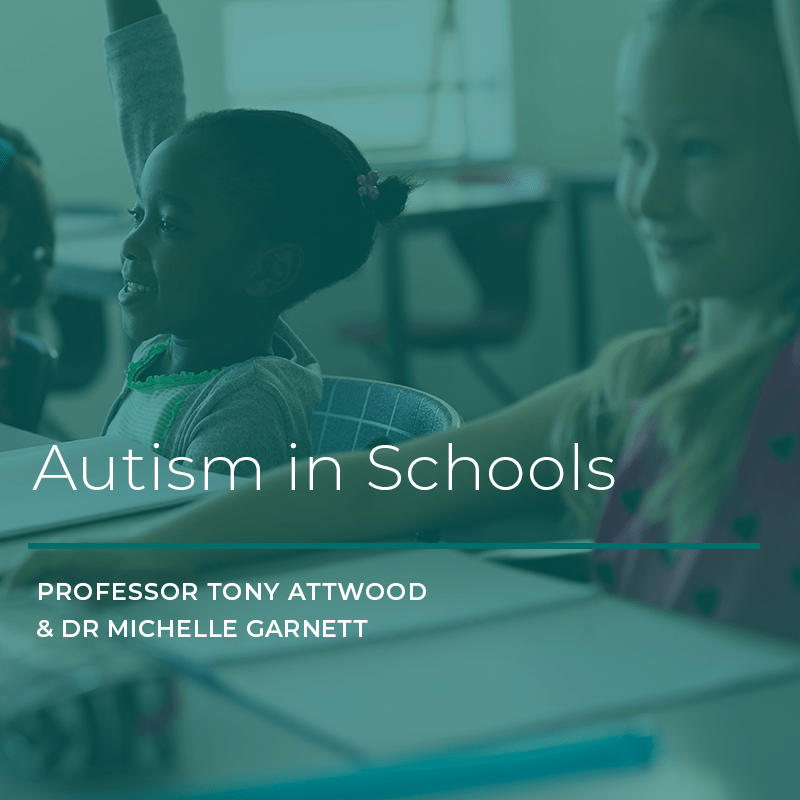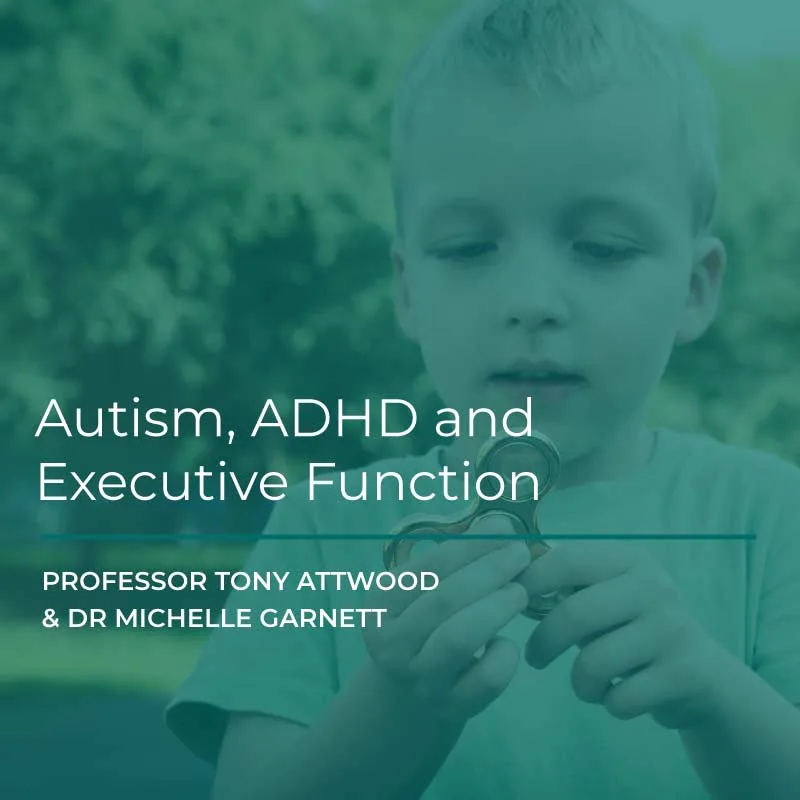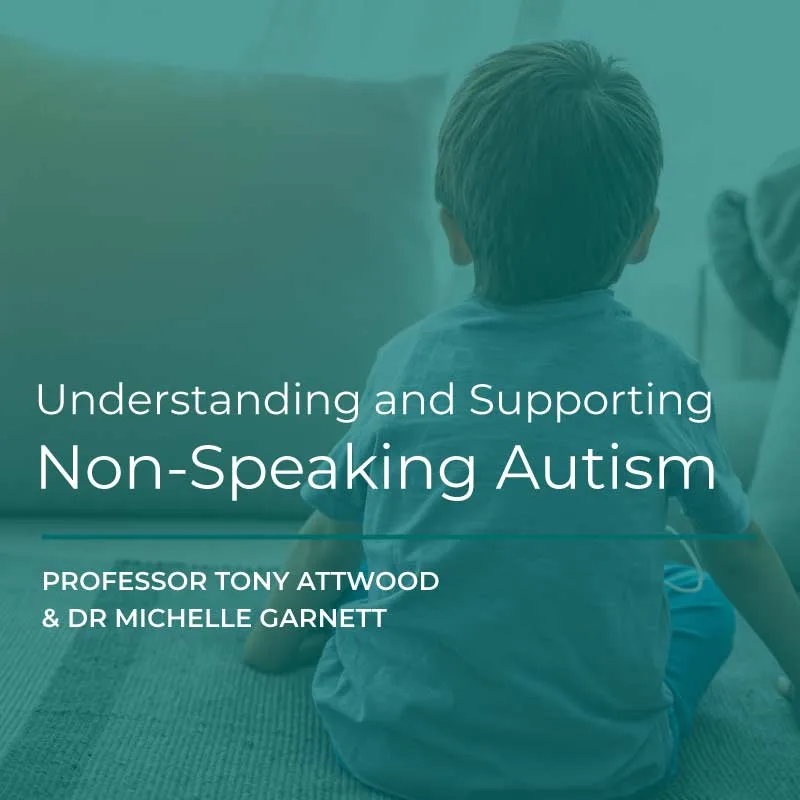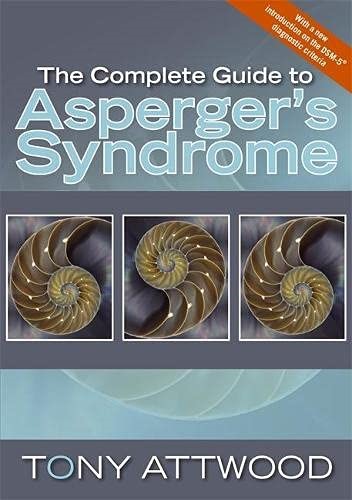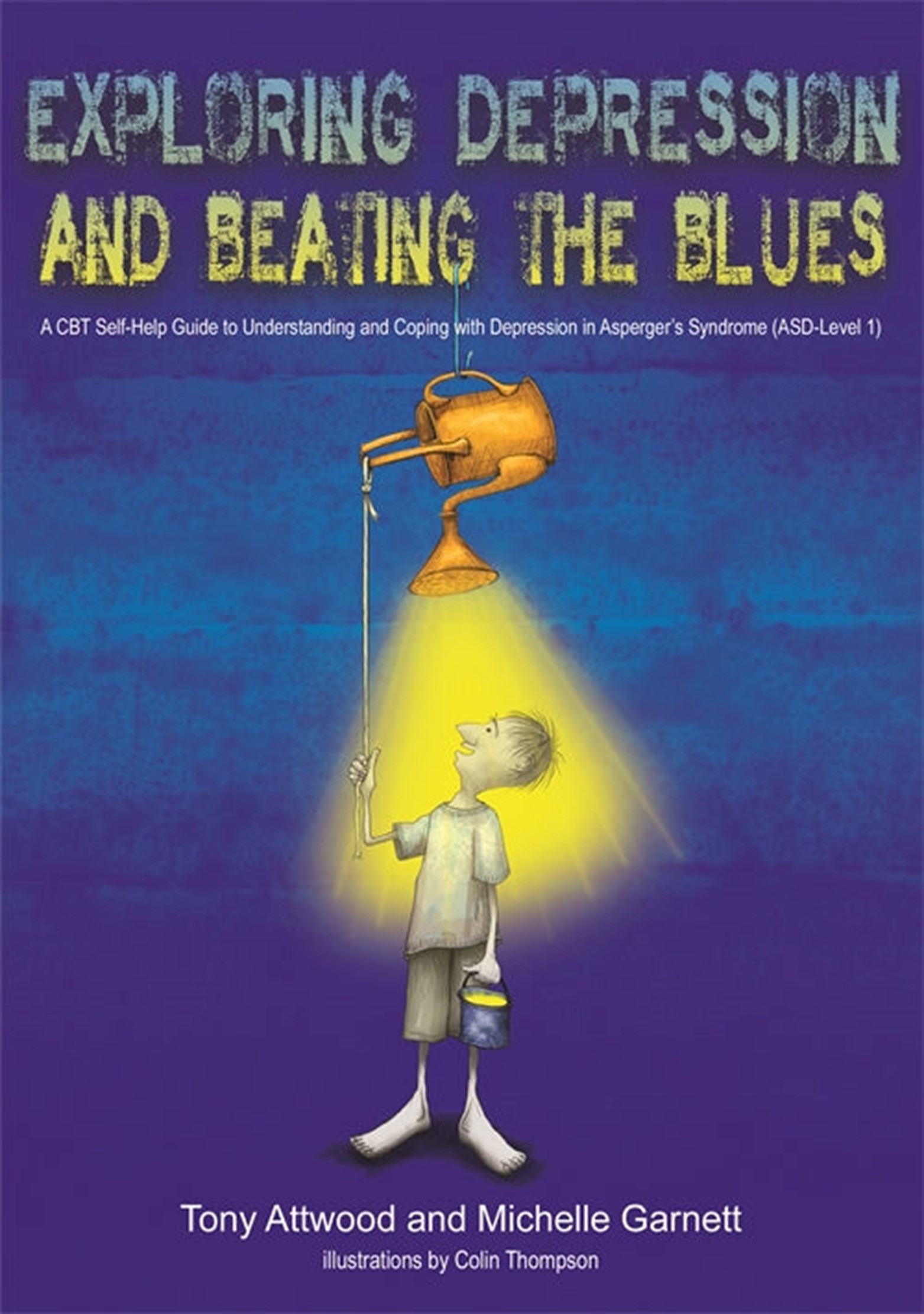Welcome to Tony Attwood's Website
A guide for parents, professionals and people with Asperger's Syndrome or Autism Spectrum Disorder Level 1 and their partners.
Ask Dr. Tony Webcasts
Regular podcasts in conversation with autismhangout.com founder/reporter Craig Evans > More Info
Participate in Research
Read about research projects that are seeking participation and find out how to get involved > More Info

to be one of the world’s foremost experts on
Autism Spectrum Disorder.
Upcoming Events
Books by Tony Attwood
Tony has published many books about Asperger's Syndrome and Autism.
He has also co-authored and contributed to publications with other experts.
He has also co-authored and contributed to publications with other experts.
New Release Out Now
Autism Working:
A Seven-Stage Plan to Thriving at Work
By Tony Attwood and Michelle Garnett


Tony Attwood, Michelle Garnett, Julia Cook, Louise Ford, and Stefanie Runham

Attwood & Garnett Events
FOUNDED BY PROFESSOR TONY ATTWOOD & DR MICHELLE GARNETT
Dr Michelle Garnett PhD is a clinical psychologist who has specialised in autism within her own private practice for over 27 years. She has co-authored six highly regarded books on autism, five with Prof Tony Attwood. Her 2018 book with Barb Cook is a seminal work on the female presentation, Spectrum Women: Walking to the Beat of Autism. Her most recent books Having Fun with Feelings on the Autism Spectrum and Ten Steps to Reducing Your Child’s Anxiety on the Autism Spectrum provide guidance to parents of young children on the autism spectrum.
Together Tony and Michelle have created a series of online courses that are available to download. There are also webinars consisting of a series of mater classes.
Recent Articles by Tony
05 November 2023
Can Autism be confused with schizophrenia?
The term autism was first used by the Swiss psychiatrist Eugen Bleuler in 1919 to describe a withdrawal from reality with a pathological predominance of inner...
05 November 2023
Autism over the age of 50
As clinicians, we have seen an increasing number of adults, and especially women, over the age of 50 seeking confirmation of autism in their developmental history and current...
16 August 2023
Autism and Ehlers-Danlos Syndrome
Researchers and clinicians in the autism area have known about the association between hypermobility and autism for a long time, and hypermobility is one common symptom...
Tony's Facebook Feed
7 hours ago
I recommend the book 'Footsteps of Two': Never Give Up: One Mum's Journey, written by Joanne Copeland and published in 2021 by Ultimate World Publishing. She describes the development of her twin autistic children and she asks the reader at the start of the book, ‘Jump in the back seat and come along for the ride’.![]() It is an amazing journey as you discover many aspects of her daughter Zalie and son, Flynn. Along the journey, you meet Donna Williams, whom I remember for her insight, wisdom and compassion. Joanne explores a range of interventions, and I particularly liked her quote, “Autism doesn’t come with an instruction guide. It comes with a mother who never gives up”. It is an inspiring journey.
... See MoreSee Less
It is an amazing journey as you discover many aspects of her daughter Zalie and son, Flynn. Along the journey, you meet Donna Williams, whom I remember for her insight, wisdom and compassion. Joanne explores a range of interventions, and I particularly liked her quote, “Autism doesn’t come with an instruction guide. It comes with a mother who never gives up”. It is an inspiring journey.
... See MoreSee Less
1 day ago
Autistic ‘Stimming’ Behaviour ![]()
![]() According to DSM-5 TR (APA 2022), one of the diagnostic criteria (B1) for Autism Spectrum Disorder is stereotyped or repetitive motor movements such as hand flapping and finger flicking and repetitive use of objects such as spinning coins or lining up objects. The clinical and academic term for such behaviour is Restricted and Repetitive Behaviours (RRB). However, the popular term can be ‘stims’ or ‘stimming’, a shortened form of self-stimulatory behaviour.
According to DSM-5 TR (APA 2022), one of the diagnostic criteria (B1) for Autism Spectrum Disorder is stereotyped or repetitive motor movements such as hand flapping and finger flicking and repetitive use of objects such as spinning coins or lining up objects. The clinical and academic term for such behaviour is Restricted and Repetitive Behaviours (RRB). However, the popular term can be ‘stims’ or ‘stimming’, a shortened form of self-stimulatory behaviour. ![]()
![]() The term stimming was first used in the United States in the late 1960s to describe behaviours that were due to an autistic person who had very limited speech living on a ward in a government institution with spartan furniture, almost no recreational facilities and staff who were not trained in supporting autistic patients. The response of a non-speaking autistic person to under-stimulation was to provide stimulation by engaging in actions such as hand flapping, jumping, rocking, toe walking, pacing, spinning, and tapping objects. The rationale was that ‘stimming’ provided stimulation to the mind and body in a deprived environment. An alternative rationale was that stimming was a protective response to overstimulation in an unpredictable environment and a means of blocking experiences and achieving sameness.
The term stimming was first used in the United States in the late 1960s to describe behaviours that were due to an autistic person who had very limited speech living on a ward in a government institution with spartan furniture, almost no recreational facilities and staff who were not trained in supporting autistic patients. The response of a non-speaking autistic person to under-stimulation was to provide stimulation by engaging in actions such as hand flapping, jumping, rocking, toe walking, pacing, spinning, and tapping objects. The rationale was that ‘stimming’ provided stimulation to the mind and body in a deprived environment. An alternative rationale was that stimming was a protective response to overstimulation in an unpredictable environment and a means of blocking experiences and achieving sameness. ![]()
![]() In the past, stimming was often seen as an aberrant behaviour that needed to be eliminated by autism treatments such as Applied Behaviour Analysis (ABA). Autistic individuals who camouflage their autism may deliberately suppress stimming so as not to appear different to others. However, stimming or RRB may have adaptive qualities that need to be recognised.
In the past, stimming was often seen as an aberrant behaviour that needed to be eliminated by autism treatments such as Applied Behaviour Analysis (ABA). Autistic individuals who camouflage their autism may deliberately suppress stimming so as not to appear different to others. However, stimming or RRB may have adaptive qualities that need to be recognised. ![]()
![]() It is also important to understand that stimming is not limited to non-speaking autistic individuals and occurs across the autism spectrum. It serves multiple functions, including communication for those with limited speech, blocking sensory and social experiences, providing extreme pleasure, reducing stress and anxiety, and creating a mind and body-connection.
It is also important to understand that stimming is not limited to non-speaking autistic individuals and occurs across the autism spectrum. It serves multiple functions, including communication for those with limited speech, blocking sensory and social experiences, providing extreme pleasure, reducing stress and anxiety, and creating a mind and body-connection. ![]()
![]() Communicating thoughts and feelings:
Communicating thoughts and feelings:![]() Non-speaking autistic children and adults can communicate their thoughts and feelings using body language. Autistic mannerisms have a message. There are signature movements that parents and experienced professionals translate, for example, a happy hand flap, which means ‘I am enjoying the experience’, and an agitated hand flap, which means ‘I don’t know what to do’. The difference is in terms of ‘tone’ or ‘energy’. When very excited and exuberant, there can be an autistic ‘dance’, a sequence of movements that express pure pleasure.
Non-speaking autistic children and adults can communicate their thoughts and feelings using body language. Autistic mannerisms have a message. There are signature movements that parents and experienced professionals translate, for example, a happy hand flap, which means ‘I am enjoying the experience’, and an agitated hand flap, which means ‘I don’t know what to do’. The difference is in terms of ‘tone’ or ‘energy’. When very excited and exuberant, there can be an autistic ‘dance’, a sequence of movements that express pure pleasure. ![]()
![]() Specific movements can also mean' leave me alone' or' please help me'. We ask parents to create a ‘foreign phrase’ dictionary explaining the meaning of the mannerism and make a video recording of the mannerism so that others will know what they mean and respond appropriately. A speech pathologist may identify and encourage a conventional gesture, such as a hand ‘brushing away,’ as an alternative action that means leave me alone that is more easily understood.
Specific movements can also mean' leave me alone' or' please help me'. We ask parents to create a ‘foreign phrase’ dictionary explaining the meaning of the mannerism and make a video recording of the mannerism so that others will know what they mean and respond appropriately. A speech pathologist may identify and encourage a conventional gesture, such as a hand ‘brushing away,’ as an alternative action that means leave me alone that is more easily understood. ![]()
![]() Blocking social and sensory experiences:
Blocking social and sensory experiences:![]() When overwhelmed by sensory and social experiences, a non-speaking autistic child or adult may use repetitive actions to ‘block’ such events. Temple Grandin did not speak until she was three and a half years old. In her autobiography, she explained her coping strategy for sensory and social experiences as a young child.
When overwhelmed by sensory and social experiences, a non-speaking autistic child or adult may use repetitive actions to ‘block’ such events. Temple Grandin did not speak until she was three and a half years old. In her autobiography, she explained her coping strategy for sensory and social experiences as a young child. ![]()
![]() “Intensely preoccupied with the movement of the spinning coin or lid, I saw nothing or heard nothing. People around me were transparent, and no sound intruded on my fixation. It was as if I was deaf. Even a sudden loud noise didn’t startle me from my world. But when I was in the world of people, I was extremely sensitive to noise” Grandin and Scariano 1986.
“Intensely preoccupied with the movement of the spinning coin or lid, I saw nothing or heard nothing. People around me were transparent, and no sound intruded on my fixation. It was as if I was deaf. Even a sudden loud noise didn’t startle me from my world. But when I was in the world of people, I was extremely sensitive to noise” Grandin and Scariano 1986. ![]()
![]() The repetitive action of spinning a coin or lid is considered an expression of stimming. This behaviour reduced her auditory and visual sensitivity and the effects of social intrusion on her enjoyment of solitude.
The repetitive action of spinning a coin or lid is considered an expression of stimming. This behaviour reduced her auditory and visual sensitivity and the effects of social intrusion on her enjoyment of solitude. ![]()
![]() The ‘stim’ or RRB prevents overload and a potential meltdown. When such actions occur, they are an indication of the need for environmental rather than behavioural modification.
The ‘stim’ or RRB prevents overload and a potential meltdown. When such actions occur, they are an indication of the need for environmental rather than behavioural modification. ![]()
![]() A pleasurable experience:
A pleasurable experience:![]() Some repetitive actions or ‘stims’ seem to be maintained by intrinsic sensory pleasure. Autism is associated with sensory sensitivity, and many sensory experiences are aversive. However, some sensory experiences are fascinating and totally engaging. This can include enjoying and being mesmerised by symmetry and regularity, such as the sleepers on a railway track or a picket fence. There may be many pleasurable sensory experiences, such as being on a swing, bouncing on a trampoline, enjoying the wind on the face from a fan, flickering light through moving fingers, twirling a blade of grass and seeing a favourite colour such as bright yellow.
Some repetitive actions or ‘stims’ seem to be maintained by intrinsic sensory pleasure. Autism is associated with sensory sensitivity, and many sensory experiences are aversive. However, some sensory experiences are fascinating and totally engaging. This can include enjoying and being mesmerised by symmetry and regularity, such as the sleepers on a railway track or a picket fence. There may be many pleasurable sensory experiences, such as being on a swing, bouncing on a trampoline, enjoying the wind on the face from a fan, flickering light through moving fingers, twirling a blade of grass and seeing a favourite colour such as bright yellow. ![]() There can be intense enjoyment in predictability, as described in the quote by Sean Barron:
There can be intense enjoyment in predictability, as described in the quote by Sean Barron: ![]()
![]() "I loved repetition. Every time I turned on a light, I knew what would happen. When I flipped the switch, the light went on. It gave me a wonderful sense of security because it was exactly the same each time. Barron and Barron 2002."
"I loved repetition. Every time I turned on a light, I knew what would happen. When I flipped the switch, the light went on. It gave me a wonderful sense of security because it was exactly the same each time. Barron and Barron 2002." ![]()
![]() Parents and professionals may be concerned about a lack of self-control over the behaviour and apprehension about whether it could become an addiction and whether to interrupt the behaviour.
Parents and professionals may be concerned about a lack of self-control over the behaviour and apprehension about whether it could become an addiction and whether to interrupt the behaviour. ![]() We recommend that there are times in the day when the autistic child can engage in and enjoy repetitive actions without interruption—a form of ‘free play’. The actions may not be acceptable in certain situations, such as at a meal table, but they are allowed in others, such as in the bedroom or garden, or when they have completed a task and are free to engage in a pleasurable experience. Temple Grandin explained that as a young child, one of her ways of coping with autism was that, at times, she was free to be autistic without correction. These are happy childhood memories for her.
We recommend that there are times in the day when the autistic child can engage in and enjoy repetitive actions without interruption—a form of ‘free play’. The actions may not be acceptable in certain situations, such as at a meal table, but they are allowed in others, such as in the bedroom or garden, or when they have completed a task and are free to engage in a pleasurable experience. Temple Grandin explained that as a young child, one of her ways of coping with autism was that, at times, she was free to be autistic without correction. These are happy childhood memories for her. ![]()
![]() Reducing stress and anxiety:
Reducing stress and anxiety:![]() Due to many factors, autistic individuals of all ability levels experience considerable stress and anxiety in their daily lives. Repetitive actions can be soothing and release stress. Non-speaking autistic children and adults may engage in whole-body movements, such as standing and swaying to the left and right or bending forward and backwards. It is as if their body was a huge metronome. We have noticed that the rhythm can be around 60 beats per minute and could be a way of synchronising and reducing heart rate when stressed or anxious. Some repetitive behaviours include being on a swing, bouncing on a trampoline or rocking on a rocking horse, again at a rhythm of around 60 beats per minute.
Due to many factors, autistic individuals of all ability levels experience considerable stress and anxiety in their daily lives. Repetitive actions can be soothing and release stress. Non-speaking autistic children and adults may engage in whole-body movements, such as standing and swaying to the left and right or bending forward and backwards. It is as if their body was a huge metronome. We have noticed that the rhythm can be around 60 beats per minute and could be a way of synchronising and reducing heart rate when stressed or anxious. Some repetitive behaviours include being on a swing, bouncing on a trampoline or rocking on a rocking horse, again at a rhythm of around 60 beats per minute. ![]()
![]() A recent study explored the function of repetitive behaviours in 12 verbally fluent autistic adults (Collis et al., 2022). Several themes were identified, including providing a distraction from anxious and depressive thoughts, maintaining attention, staving off boredom and regulating the build-up of emotional pressure and pent-up energy. We have found that repetitive action can be used as a ‘barometer’ to measure stress pressure.
A recent study explored the function of repetitive behaviours in 12 verbally fluent autistic adults (Collis et al., 2022). Several themes were identified, including providing a distraction from anxious and depressive thoughts, maintaining attention, staving off boredom and regulating the build-up of emotional pressure and pent-up energy. We have found that repetitive action can be used as a ‘barometer’ to measure stress pressure. ![]()
![]() The research participants reported being reprimanded or bullied in childhood for repetitive behaviour or ‘stims’ and having to develop their own methods of self-policing. They also found that resisting the behaviour increased stress levels and was difficult to achieve.
The research participants reported being reprimanded or bullied in childhood for repetitive behaviour or ‘stims’ and having to develop their own methods of self-policing. They also found that resisting the behaviour increased stress levels and was difficult to achieve. ![]() A study by Charlton et al. (2021) was based on an analysis of the results of an online survey of autistic adults. The study confirmed that ‘stims’ support self-regulation for emotional and cognitive functioning. They can be a means of emotional release, as in the quotes of the research participants:
A study by Charlton et al. (2021) was based on an analysis of the results of an online survey of autistic adults. The study confirmed that ‘stims’ support self-regulation for emotional and cognitive functioning. They can be a means of emotional release, as in the quotes of the research participants: ![]()
![]() "Stuck energy can flow out of me instead of stay in me and cause pain."
"Stuck energy can flow out of me instead of stay in me and cause pain." ![]() "To relieve a build-up of feelings before I get overwhelmed."
"To relieve a build-up of feelings before I get overwhelmed."![]() "I find it comforting and relaxing."
"I find it comforting and relaxing." ![]()
![]() Being told not to stim at home or work meant changing, substituting, or suppressing stims for social acceptance. This was effortful and led to frustration with having coping mechanisms that you cannot use. There were comments such as Feeling caged, restrained, and trapped.
Being told not to stim at home or work meant changing, substituting, or suppressing stims for social acceptance. This was effortful and led to frustration with having coping mechanisms that you cannot use. There were comments such as Feeling caged, restrained, and trapped. ![]()
![]() A participant in the Collins et al. (2022) study explained how he was reprimanded by his manager for repetitively taking apart a pen and said:
A participant in the Collins et al. (2022) study explained how he was reprimanded by his manager for repetitively taking apart a pen and said: ![]() "I didn’t really stop, but I didn’t take it apart. I just had it in my hands."
"I didn’t really stop, but I didn’t take it apart. I just had it in my hands." ![]()
![]() We recognise the value of RRB in reducing stress and anxiety and suggest that the autistic person explains why the behaviour is such a valuable coping mechanism to encourage acceptance or moderate the behaviour as a compromise.
We recognise the value of RRB in reducing stress and anxiety and suggest that the autistic person explains why the behaviour is such a valuable coping mechanism to encourage acceptance or moderate the behaviour as a compromise. ![]()
![]() Creating a mind/body connection:
Creating a mind/body connection:![]() Some non-speaking autistic individuals have considerable difficulty initiating specific actions. There seems to be a mind and body disconnection. There is intent to make the movement, but the autistic person is ‘frozen’ due to a movement disturbance rather than the ‘freezing’ that can occur due to extreme anxiety. A mannerism or stim can be used to gain mental control of movement, a behavioural bridging action that functions as a mind/body connection. This can be observed in situations such as wanting to use a round door handle and moving the arm towards the handle but not being able to form the hand shape to use the handle. Quick motor mannerisms, such as flapping the hand, may facilitate initiating and completing the movement to open the door.
Some non-speaking autistic individuals have considerable difficulty initiating specific actions. There seems to be a mind and body disconnection. There is intent to make the movement, but the autistic person is ‘frozen’ due to a movement disturbance rather than the ‘freezing’ that can occur due to extreme anxiety. A mannerism or stim can be used to gain mental control of movement, a behavioural bridging action that functions as a mind/body connection. This can be observed in situations such as wanting to use a round door handle and moving the arm towards the handle but not being able to form the hand shape to use the handle. Quick motor mannerisms, such as flapping the hand, may facilitate initiating and completing the movement to open the door. ![]()
![]()
![]() Conclusion:
Conclusion: ![]() Stimming is associated with autism and can be misunderstood in our community. In the past, such actions were perceived as aberrant behaviour. We now know that stimming is a constructive coping mechanism, and we need to encourage acceptance, not correction and further explore the positive effects of RRB or ‘stims’ on mental health and everyday functioning.
Stimming is associated with autism and can be misunderstood in our community. In the past, such actions were perceived as aberrant behaviour. We now know that stimming is a constructive coping mechanism, and we need to encourage acceptance, not correction and further explore the positive effects of RRB or ‘stims’ on mental health and everyday functioning. ![]()
![]() Where to from here?
Where to from here? ![]() On Friday, the 28th of June, Michelle and Tony will present a full-day course on Understanding and Supporting Non-speaking Autism. The course will equip participants with an understanding of life as experienced by a non-speaking autistic person, the reasons for specific behavioural and emotional reactions and the creation of an individualised plan to enhance the quality of life and well-being.
On Friday, the 28th of June, Michelle and Tony will present a full-day course on Understanding and Supporting Non-speaking Autism. The course will equip participants with an understanding of life as experienced by a non-speaking autistic person, the reasons for specific behavioural and emotional reactions and the creation of an individualised plan to enhance the quality of life and well-being. ![]() Participants in the course will learn practical strategies to encourage speech, the value of alternative and augmentative communication systems, how to acquire new abilities and coping mechanisms for accommodating changes in routines and expectations, sensory sensitivity, and social engagement, and how to express and regulate intense emotions constructively.
Participants in the course will learn practical strategies to encourage speech, the value of alternative and augmentative communication systems, how to acquire new abilities and coping mechanisms for accommodating changes in routines and expectations, sensory sensitivity, and social engagement, and how to express and regulate intense emotions constructively. ![]()
![]() attwoodandgarnettevents.com/product/webcast-event-understanding-and-supporting-non-speaking-autis...
attwoodandgarnettevents.com/product/webcast-event-understanding-and-supporting-non-speaking-autis...![]()
![]() References:
References:![]() A.P.A. (2022). Diagnostic and Statistical Manual of Mental Disorders: DSM-5-TR (Fifth edition, text revision). American Psychiatric Association Publishing.
A.P.A. (2022). Diagnostic and Statistical Manual of Mental Disorders: DSM-5-TR (Fifth edition, text revision). American Psychiatric Association Publishing. ![]() Barron and Barron (2002) There’s a Boy in Here: Emerging from the Bonds of Autism Arlington, Texas. Future Horizons.
Barron and Barron (2002) There’s a Boy in Here: Emerging from the Bonds of Autism Arlington, Texas. Future Horizons. ![]() Charlton et al. (2021) Research in ASD, 89, 101864
Charlton et al. (2021) Research in ASD, 89, 101864 ![]() Collis et al. (2022) Research in ASD, 90, 101895
Collis et al. (2022) Research in ASD, 90, 101895 ![]() Grandin, T. and Scariano, M. (1986). Emergence: Labelled Autistic. Novato, California: Arena Press.
Grandin, T. and Scariano, M. (1986). Emergence: Labelled Autistic. Novato, California: Arena Press. ![]() #actuallyautistic #autism #autistic #autismawareness #autismacceptance #autismspectrum #psychologist #psychology #alliedhealthprofessionals #teachers #psychiatry #InclusiveHealthcare #InclusiveSociety #BlogWednesday
... See MoreSee Less
#actuallyautistic #autism #autistic #autismawareness #autismacceptance #autismspectrum #psychologist #psychology #alliedhealthprofessionals #teachers #psychiatry #InclusiveHealthcare #InclusiveSociety #BlogWednesday
... See MoreSee Less
2 days ago
Autistic adults’ experience of restricted repetitive behaviours. ![]()
![]() Collins E., Gavin J., Russell A. and Brosnan M. (2022), Research in Autism Spectrum Disorders 90, 101895.
Collins E., Gavin J., Russell A. and Brosnan M. (2022), Research in Autism Spectrum Disorders 90, 101895. ![]()
![]() Restricted and Repetitive Behaviours (RRB) are a core characteristic of autism. According to DSM5-TR (2022), they include repetitive motor movements such as hand flapping and finger flicking and repetitive use of objects such as spinning coins or lining up objects.
Restricted and Repetitive Behaviours (RRB) are a core characteristic of autism. According to DSM5-TR (2022), they include repetitive motor movements such as hand flapping and finger flicking and repetitive use of objects such as spinning coins or lining up objects. ![]()
![]() RRB may seem functionless to an observer, and treatments such as Applied Behaviour Analysis (ABA) seek to eliminate this behaviour, while those autistic individuals who camouflage their autism may deliberately suppress RRB. However, RRB may have adaptive qualities that need to be recognised.
RRB may seem functionless to an observer, and treatments such as Applied Behaviour Analysis (ABA) seek to eliminate this behaviour, while those autistic individuals who camouflage their autism may deliberately suppress RRB. However, RRB may have adaptive qualities that need to be recognised. ![]()
![]() In the study by Collins et al. (2022), twelve autistic adults were interviewed to understand RRB from their perspectives. Thematic analysis identified four key themes: self-regulation, positive impacts, negative impacts, and suppression.
In the study by Collins et al. (2022), twelve autistic adults were interviewed to understand RRB from their perspectives. Thematic analysis identified four key themes: self-regulation, positive impacts, negative impacts, and suppression. ![]()
![]() Self-regulation:
Self-regulation:![]() Repetitive movements can help regulate attention and emotions as illustrated in a quotation from one of the research participants.
Repetitive movements can help regulate attention and emotions as illustrated in a quotation from one of the research participants. ![]() "I got myself a fidget spinner and started playing with that, and it was nice to just spin that in my fingers, knowing that I don’t have to look at it and can still watch the telly and what’s going on."
"I got myself a fidget spinner and started playing with that, and it was nice to just spin that in my fingers, knowing that I don’t have to look at it and can still watch the telly and what’s going on." ![]()
![]() Actions such as pacing or rolling dice can regulate emotions and provide a comforting sensory experience. They can also distract from depressive thoughts and sensory issues, clarify thinking, and stave off boredom. For many participants in the study, stillness was reported as uncomfortable but was alleviated by RRB.
Actions such as pacing or rolling dice can regulate emotions and provide a comforting sensory experience. They can also distract from depressive thoughts and sensory issues, clarify thinking, and stave off boredom. For many participants in the study, stillness was reported as uncomfortable but was alleviated by RRB. ![]()
![]() Positive impact:
Positive impact:![]() One of the functions of RRB is enjoyment; for example, one of the research participants explained that:
One of the functions of RRB is enjoyment; for example, one of the research participants explained that: ![]() "It’s not exactly like euphoric but it’s like a lesser version of that. It just feels nice, it’s a nice kind of feeling like in your stomach."
"It’s not exactly like euphoric but it’s like a lesser version of that. It just feels nice, it’s a nice kind of feeling like in your stomach."![]()
![]() And another explained:
And another explained: ![]() "I do like a fidget spinner. It’s quite a nice surreal feeling."
"I do like a fidget spinner. It’s quite a nice surreal feeling."![]()
![]() Negative impact:
Negative impact:![]() Engaging in RRB can lead to problems with losing track of time and potentially becoming so absorbed it affects sleep and other activities. Some participants reported feelings of a lack of control over the behaviour and apprehension about whether it could become an addiction.
Engaging in RRB can lead to problems with losing track of time and potentially becoming so absorbed it affects sleep and other activities. Some participants reported feelings of a lack of control over the behaviour and apprehension about whether it could become an addiction. ![]()
![]() Suppression:
Suppression:![]() The research participants described their awareness and concern about how RRB might affect or be perceived by others as illustrated by:
The research participants described their awareness and concern about how RRB might affect or be perceived by others as illustrated by: ![]() "I just feel like people will think it’s a bit odd, a bit unusual."
"I just feel like people will think it’s a bit odd, a bit unusual."![]()
![]() The participants also described being reprimanded, bullied, or physically restrained for RRB in childhood and that they felt ashamed when they engaged in such behaviour. This may lead to attempts to self-police and suppress or substitute the behaviour. One participant was reprimanded by their manager for repetitively taking apart a pen and said:
The participants also described being reprimanded, bullied, or physically restrained for RRB in childhood and that they felt ashamed when they engaged in such behaviour. This may lead to attempts to self-police and suppress or substitute the behaviour. One participant was reprimanded by their manager for repetitively taking apart a pen and said: ![]() "I didn’t really stop, but I didn’t take it apart, I just had it in my hands."
"I didn’t really stop, but I didn’t take it apart, I just had it in my hands."![]()
![]() Some practical strategies can help, such as sitting on one’s hands. However, not engaging in RRB was reported as creating more stress in an already stressful situation.
Some practical strategies can help, such as sitting on one’s hands. However, not engaging in RRB was reported as creating more stress in an already stressful situation. ![]()
![]() The authors of the research paper encourage future research to help maximise the positive impacts and minimise the negative, and further explore the impact of suppressing RRB on mental health and functioning.
The authors of the research paper encourage future research to help maximise the positive impacts and minimise the negative, and further explore the impact of suppressing RRB on mental health and functioning. ![]()
![]() Where to from here:
Where to from here:![]() Understanding And Supporting Non-Speaking Autism course 28 June 2024.
Understanding And Supporting Non-Speaking Autism course 28 June 2024. ![]() This course educates participants about the interplay between severe speech and language disorders and autism, emphasising the development of practical strategies to support non-speaking autistic individuals. It covers a range of topics, including sensory processing, emotional management, social engagement, and movement disorders, drawing from scientific research, clinical insights, and autobiographies.
This course educates participants about the interplay between severe speech and language disorders and autism, emphasising the development of practical strategies to support non-speaking autistic individuals. It covers a range of topics, including sensory processing, emotional management, social engagement, and movement disorders, drawing from scientific research, clinical insights, and autobiographies.![]()
![]() attwoodandgarnettevents.com/product/webcast-event-understanding-and-supporting-non-speaking-autis...
attwoodandgarnettevents.com/product/webcast-event-understanding-and-supporting-non-speaking-autis...![]()
![]() #actuallyautistic #autism #autistic #autismawareness #autismacceptance #autismspectrum #psychologist #psychology #alliedhealthprofessionals #teachers #psychiatry #InclusiveHealthcare #InclusiveSociety #ResearchTuesday
... See MoreSee Less
#actuallyautistic #autism #autistic #autismawareness #autismacceptance #autismspectrum #psychologist #psychology #alliedhealthprofessionals #teachers #psychiatry #InclusiveHealthcare #InclusiveSociety #ResearchTuesday
... See MoreSee Less
